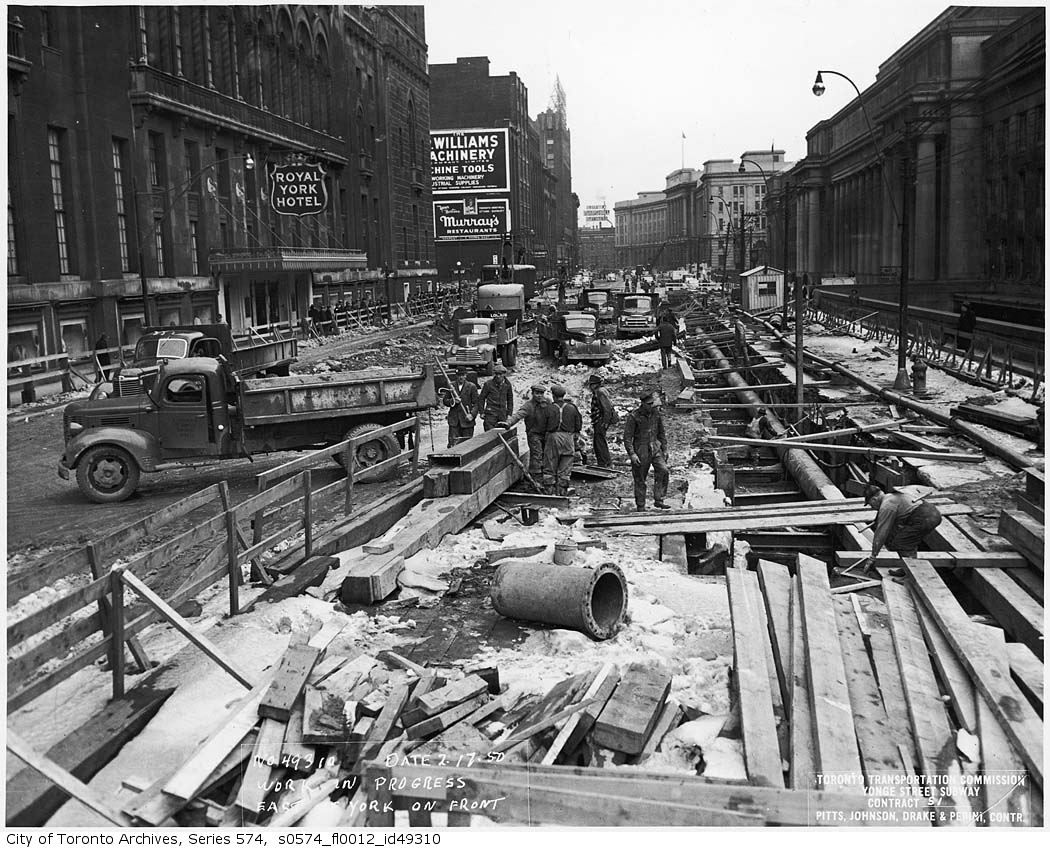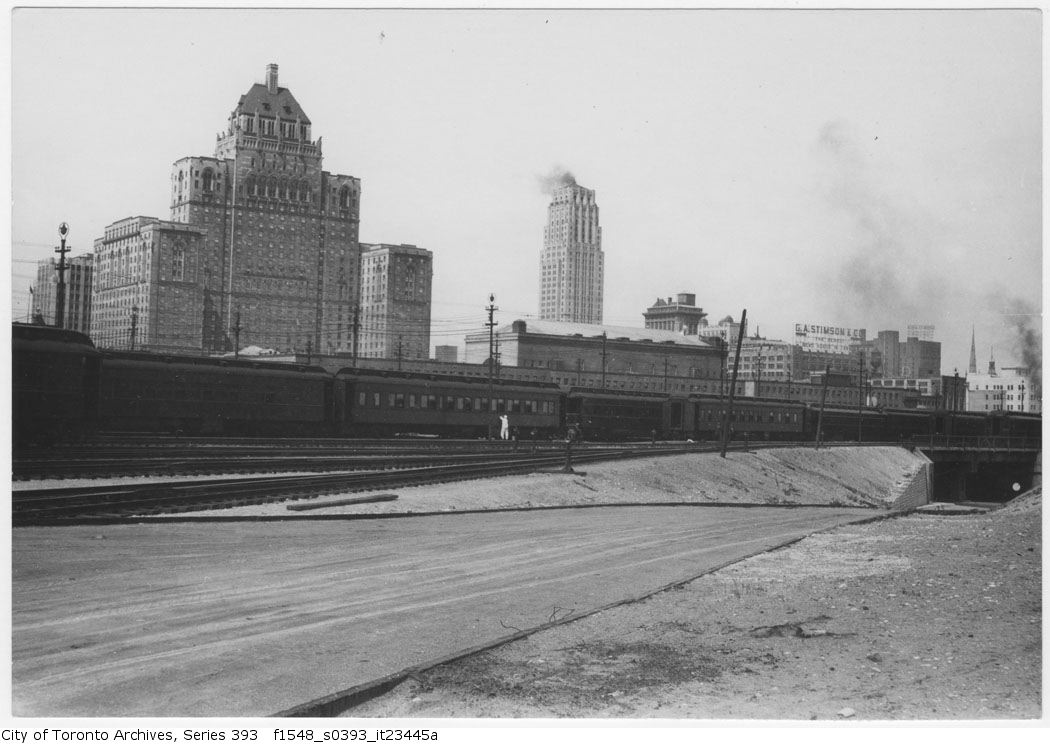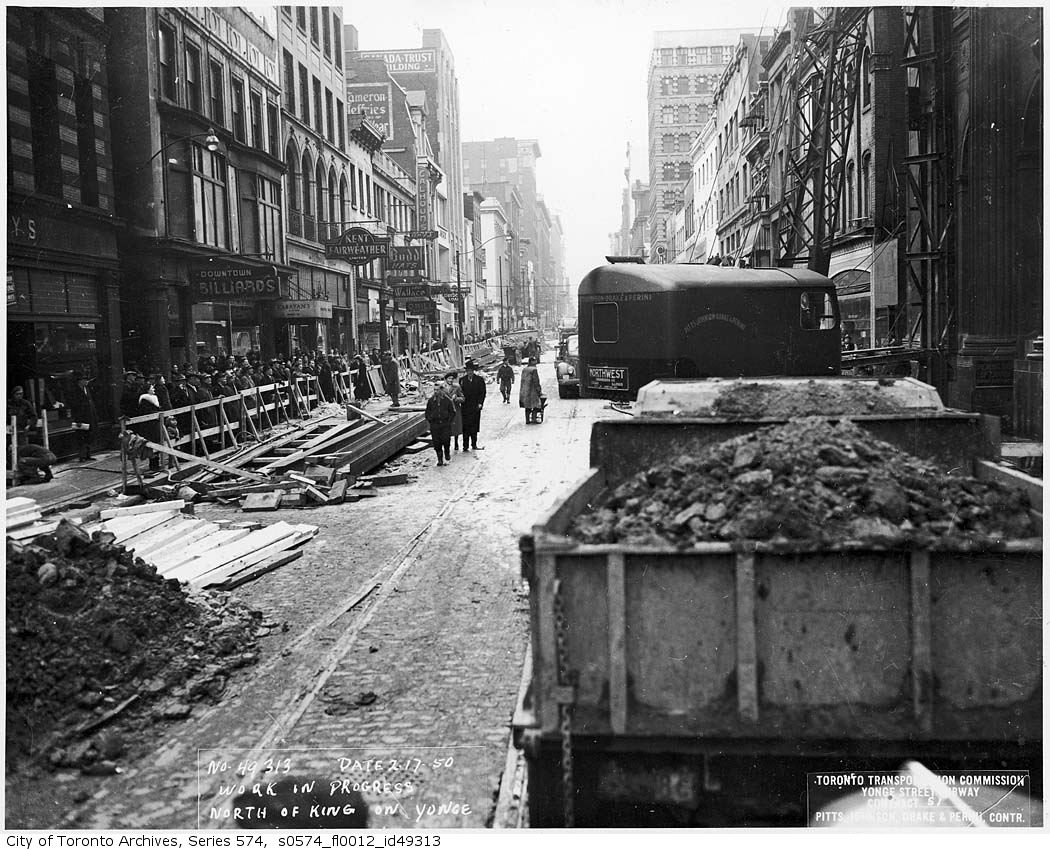On June 13 the Board held its Annual Lunch. As we celebrate the Board's achievements of the past year, we are also highlighting our history of influence while remaining focused on tomorrow’s success.
The Board and Toronto have grown up together.
As muddy York became the City of Toronto, The Board of Trade of the City of Toronto took root representing the interests of business and by extension the broader community. From the beginning, the Board has played a pivotal role in shaping the physical infrastructure of Toronto and the Great Lakes Region as it grew to be North America’s fourth largest city and Canada’s business capital.
The objectives have always been clear. Ensure we build the right infrastructure for the City so that people and goods could move freely to facilitate trade, commerce, and prosperity. On a journey by foot, on bike, in a car or on transit, it would be hard to find any significant piece of key Toronto infrastructure during the trip that was built without the Board contributing its opinion and influence. As the City grew by blocks and later kilometres, as it grew east, west, north, and south, the Board weighed in to support business and community growth.
In the 19th century this meant fighting for rail connectivity to the rest of Canada, in particular the west to support Toronto’s growing harbour from which grain and timber was shipped. It meant battling railways and lobbying government to level the higher rail tariffs charged to the Toronto market. It meant advocating for the dredging of the canals that connected the Great Lakes and St. Lawrence River to Lake Ontario and Toronto’s burgeoning harbour.
Considering the lengthy timeline of infrastructure projects, patience has long been a virtue of the Board. Issues with Toronto’s ever-changing waterfront is one prime example. It took sixty years of lobbying by the Board before there was a suitable route for cars and pedestrians to travel from the city’s core to the lakeshore, without having to dodge moving trains.

From muddy York’s existence to this day, where our Lake Ontario shoreline was and is, and what it looks like is constantly being reinvented. In the early days of the city, railway tracks were built south of Front Street with the growing and bustling harbour just on the other side. There was no Gardiner Expressway, or rows of condos stretching nearly a kilometre into the lake as there is today. Instead, just metres across the tracks there were ships and docks being emptied and fed from goods brought to and from the harbour by rail.

But with the tracks at ground level, access to the docks was hindered and accidents were frequent. The solution was a viaduct – a series of bridges that allowed roads like York, Yonge, Bay and others to be dug under the tracks as they are today. The Board lobbied railways and governments annually from 1870 until the viaduct project was fully completed from end-to-end in the early 1930s. The project took so long that when Union Station was completed in 1921 it had to sit idle until the bridge sections by York and Bay streets were finished allowing it to finally open in 1927.

Union Station was conceived as a grand transportation hub to accommodate the growing demands of rail travel and the Board played a key role in advocating for its construction and renovation recognizing the importance of a central transit hub for the city's economic growth. It’s a role the Board continues to advocate for today.
Air travel was another key transportation need identified early by the Board. Since the 1930’s it supported the idea of two airports, one on the waterfront and another in Malton, today’s Pearson.
In 1926, there were 6,436 aviation passengers, three years later that number had jumped to 75,000. The Board was alarmed that Toronto would miss out on rapidly expanding aviation and pressed all levels of government. An advisory committee was struck, chaired by the Board’s representative.
By 1934 plans for an island airport were underway, a tunnel had even been started only to be cancelled by the federal government a year later. The Board pressed on as air routes were being established globally and across the continent at the time and no one wanted to miss out. Finally in July 1937, City Council approved both the island airport and what was at first viewed as an auxiliary airport at Malton.
The Board has continued to support and advocate for both airports ever since. It was a strong supporter of the Union Station West concept at Toronto Pearson and has hosted events over the years to raise the profile of the airport’s needs It also continued to support Billy Bishop airport as it grew into an economic driver, including its new terminal building, a finally completed pedestrian tunnel and further expansion plans. The Board recently hosted a waterfront event focused on the island airport’s future and contribution to the Toronto economy. Today, the Board continues to champion air travel into and out of our region due to its considerable impact on our economy.

